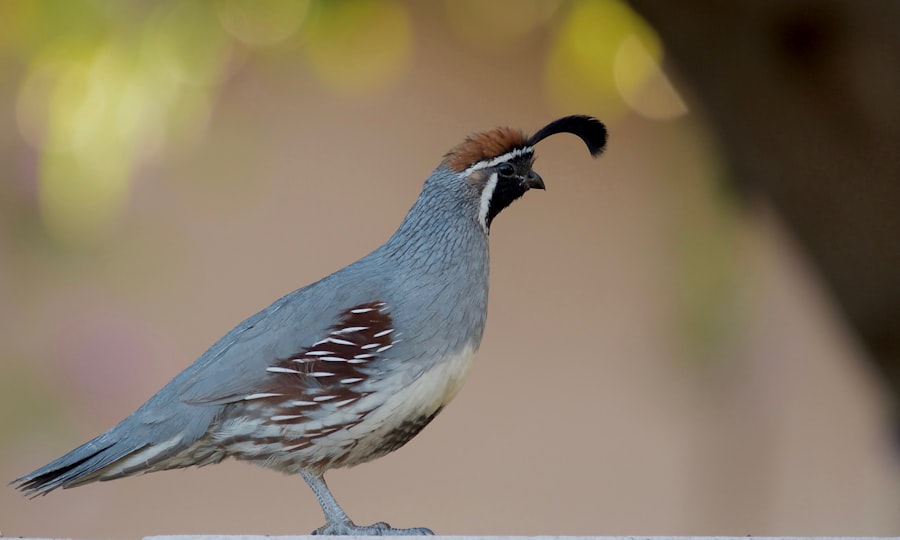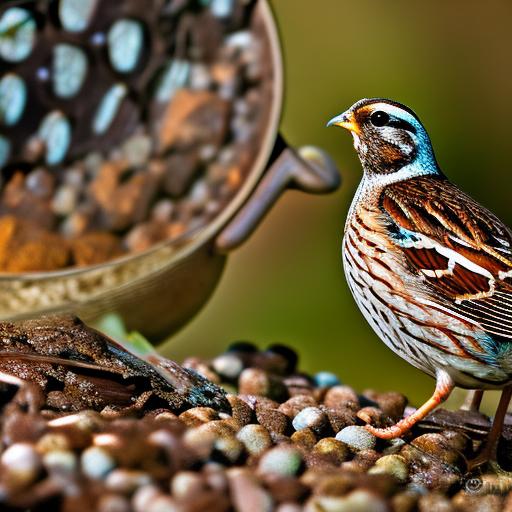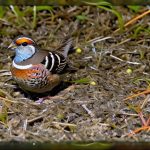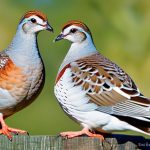Maintaining a quail coop is essential for the health and well-being of your quail flock. Regular maintenance ensures a clean and safe environment for your birds, which in turn promotes their overall health and productivity. Proper maintenance also helps to prevent the spread of diseases and parasites, and it can prolong the life of your coop. In this article, we will discuss the various aspects of quail coop maintenance, including cleaning and sanitizing, checking and repairing the coop structure, providing adequate ventilation and lighting, managing the coop environment, preventing predators and pests, and conducting regular health checks. By following these guidelines, you can ensure that your quail coop remains a comfortable and healthy home for your birds.
Key Takeaways
- Regular cleaning and sanitizing of the quail coop is essential for maintaining a healthy environment for the birds.
- Checking and repairing the structure of the quail coop is important to ensure the safety and security of the birds.
- Adequate ventilation and lighting are crucial for the well-being of the quail residents in the coop.
- Managing the quail coop environment involves maintaining the right temperature, humidity, and bedding for the birds.
- Preventing predators and pests from entering the quail coop is necessary to protect the birds from harm.
Cleaning and Sanitizing the Quail Coop
Cleaning and sanitizing the quail coop is one of the most important aspects of maintenance. Regular cleaning helps to remove waste, dirt, and debris that can harbor bacteria and parasites. Start by removing all the quail from the coop and transferring them to a temporary holding area. Then, remove all bedding, nesting material, and feed from the coop. Use a shovel or rake to remove any accumulated waste from the floor of the coop. Once the coop is empty, use a high-pressure hose to thoroughly wash down the interior walls, floor, and any nesting boxes or perches. After washing, use a disinfectant solution to sanitize the entire coop. Make sure to follow the manufacturer’s instructions for dilution and application. Allow the coop to dry completely before adding fresh bedding and returning the quail. Regularly cleaning and sanitizing the coop will help to prevent the spread of diseases and parasites, and it will create a healthier environment for your quail.
In addition to regular cleaning, it’s important to also maintain good hygiene practices when handling your quail. Wash your hands thoroughly before and after handling the birds, and change into clean clothes and footwear before entering the coop. This will help to prevent the introduction of pathogens into the coop and reduce the risk of disease transmission. By practicing good hygiene and regularly cleaning and sanitizing the coop, you can help to ensure the health and well-being of your quail flock.
Checking and Repairing the Quail Coop Structure
Regularly checking and repairing the quail coop structure is essential for maintaining a safe and secure environment for your birds. Start by inspecting the exterior of the coop for any signs of damage or wear. Check for loose or rotting boards, gaps in the walls or roof, and any signs of pest infestation. Repair any damage immediately to prevent further deterioration and to keep predators out. Next, inspect the interior of the coop for any structural issues. Check for loose or broken perches, nesting boxes, or feeders, and repair or replace them as needed. It’s also important to regularly check the flooring of the coop for any signs of wear or damage. Replace any worn or damaged flooring to prevent injury to your quail and to maintain a clean and comfortable living space for them.
In addition to regular inspections, it’s important to also consider the overall design and layout of the coop. Make sure that there is adequate space for all of your quail, and that they have access to fresh air and natural light. Consider adding additional features such as dust baths or enrichment activities to keep your quail stimulated and healthy. By regularly checking and repairing the coop structure, you can ensure that your quail have a safe and comfortable home that meets all of their needs.
Providing Adequate Ventilation and Lighting
Adequate ventilation and lighting are essential for maintaining a healthy quail coop environment. Proper ventilation helps to remove excess moisture, ammonia, and other airborne pollutants from the coop, which can help to prevent respiratory issues and promote overall health. It also helps to regulate temperature and humidity levels within the coop, creating a more comfortable environment for your quail. Ensure that there are enough vents or windows in the coop to allow for good air circulation, and consider adding additional ventilation if needed. It’s also important to regularly clean vents and windows to prevent blockages and ensure that air can flow freely through the coop.
In addition to ventilation, proper lighting is also important for maintaining a healthy quail coop environment. Quail require a consistent day-night cycle to regulate their behavior and reproductive patterns. Ensure that the coop has access to natural light during the day, either through windows or skylights, and consider adding artificial lighting if needed. Provide at least 14-16 hours of light per day to stimulate egg production in laying hens. It’s important to also provide a period of darkness at night to allow your quail to rest and recharge. By providing adequate ventilation and lighting in the quail coop, you can create a comfortable and healthy environment for your birds.
Managing the Quail Coop Environment
Managing the quail coop environment is essential for maintaining a healthy and productive flock. Start by ensuring that there is enough space for all of your quail to move around comfortably. Overcrowding can lead to stress, aggression, and an increased risk of disease transmission. Provide at least 1 square foot of space per bird in the coop, and consider adding outdoor runs or free-range access if possible. Next, consider the bedding material in the coop. Use a high-quality bedding material such as straw or wood shavings that is absorbent and easy to clean. Regularly replace soiled bedding to maintain a clean and comfortable living space for your quail.
It’s also important to consider the diet and nutrition of your quail flock. Provide a balanced diet that meets all of their nutritional needs, including protein, vitamins, and minerals. Ensure that there is always access to fresh water and feed, and regularly clean feeders and waterers to prevent contamination. Consider adding enrichment activities such as perches, dust baths, or toys to keep your quail stimulated and engaged. By managing the quail coop environment, you can create a comfortable and healthy living space for your birds that promotes their overall well-being.
Preventing Predators and Pests

Preventing predators and pests is essential for maintaining a safe and secure quail coop environment. Start by inspecting the exterior of the coop for any signs of damage or weak points that could allow predators to gain access. Repair any damage immediately, and consider adding additional security measures such as predator-proof fencing or hardware cloth around the base of the coop. It’s also important to regularly check for signs of pest infestation such as rodents or insects. Use traps or baits to control pests, and regularly clean and sanitize the coop to prevent infestations from taking hold.
In addition to physical barriers, consider adding deterrents such as motion-activated lights or sound devices to scare off potential predators. It’s also important to regularly monitor the area around the coop for signs of predators such as tracks or droppings. Consider adding guard animals such as dogs or guinea fowl to help protect your quail from predators. By preventing predators and pests from gaining access to the quail coop, you can create a safe and secure environment for your birds.
Regular Health Checks and Monitoring of Quail Coop Residents
Regular health checks and monitoring of quail coop residents are essential for maintaining a healthy flock. Start by regularly observing your quail for any signs of illness or injury such as lethargy, decreased appetite, or abnormal behavior. If you notice any concerning symptoms, isolate the affected bird immediately and consult with a veterinarian if needed. It’s also important to regularly check for signs of parasites such as mites or lice on your quail. Use dust baths or other treatments as needed to control parasites and keep your birds healthy.
In addition to regular observations, it’s important to also conduct regular health checks on your quail flock. This includes checking their weight, body condition, and overall appearance. Monitor egg production in laying hens, as a sudden decrease in egg production can be a sign of underlying health issues. It’s also important to regularly trim your quail’s nails and beak if needed to prevent overgrowth that can lead to injury or discomfort. By conducting regular health checks and monitoring your quail coop residents, you can identify any potential issues early on and take steps to keep your flock healthy.
In conclusion, maintaining a quail coop requires regular attention to cleaning, structural maintenance, environmental management, predator prevention, and health monitoring. By following these guidelines for quail coop maintenance, you can ensure that your birds have a clean, safe, and comfortable living environment that promotes their overall health and well-being. Regular maintenance not only benefits your quail but also contributes to their productivity and longevity in your care. With proper care and attention, your quail can thrive in their coop environment for years to come.
If you’re looking for tips on keeping your quail coop clean and organized, you might also be interested in learning about the best practices for maintaining a farmhouse chicken coop. Check out this informative article on farmhouse chicken coop maintenance to ensure that your coop is a healthy and comfortable environment for your feathered friends.
FAQs
What is a quail coop?
A quail coop is a shelter or enclosure specifically designed to house and protect quail. It provides a safe and secure environment for quail to live and lay eggs.
What are the important factors to consider when keeping quail in a coop?
When keeping quail in a coop, it is important to consider factors such as space, ventilation, protection from predators, cleanliness, and access to food and water.
How big should a quail coop be?
The size of a quail coop will depend on the number of quail being housed. As a general guideline, each quail should have at least 1 square foot of space in the coop.
What kind of ventilation is needed in a quail coop?
Good ventilation is essential in a quail coop to ensure proper air circulation and prevent the buildup of ammonia from droppings. This can be achieved through windows, vents, or mesh openings.
How can a quail coop be protected from predators?
To protect quail from predators, the coop should be constructed with sturdy materials and have secure latches on doors and windows. Additionally, the coop should be surrounded by a predator-proof fence or wire mesh.
How often should a quail coop be cleaned?
A quail coop should be cleaned regularly to maintain a healthy environment for the quail. This may involve removing droppings, replacing bedding, and disinfecting the coop as needed.
What should be included in a quail coop for the quail’s comfort?
A quail coop should include nesting boxes for egg-laying, perches for roosting, and a designated area for food and water. Providing a comfortable and stress-free environment is important for the well-being of the quail.
Meet Walter, the feathered-friend fanatic of Florida! Nestled in the sunshine state, Walter struts through life with his feathered companions, clucking his way to happiness. With a coop that’s fancier than a five-star hotel, he’s the Don Juan of the chicken world. When he’s not teaching his hens to do the cha-cha, you’ll find him in a heated debate with his prized rooster, Sir Clucks-a-Lot. Walter’s poultry passion is no yolk; he’s the sunny-side-up guy you never knew you needed in your flock of friends!







